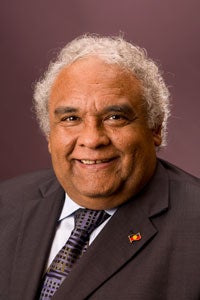A Community Guide: Social Justice and Native Title Reports 2008
Archived
You are in an archived section of the website. This information may not be current.
This page was first created in December, 2012
 Social Justice and Native Title Reports 2008
Social Justice and Native Title Reports 2008
A Community Guide
Please be aware that this publication may contain the names or images of Aboriginal and Torres Strait Islander people who may now be deceased.
Reports
A note from the Commissioner
In my role as Aboriginal and Torres Strait Islander Social Justice Commissioner I am required to produce two annual reports on Indigenous human rights issues – the Social Justice Report and the Native Title Report.
The reports, which are tabled in federal Parliament, analyse the major changes and challenges in Indigenous affairs over the past year. They also include recommendations to better promote and protect the rights of Aboriginal and Torres Strait Islander peoples.
The National Apology to the Stolen Generations in February 2008 marked the beginning of a new partnership between Aboriginal and Torres Strait Islander peoples and governments. It is crucial to build on this promising start.
In this year’s Social Justice Report I look at what is needed to improve Indigenous human rights protection, remote Indigenous education, healing and health equality. I set out what I believe are some of the key steps that governments can take over the next 18 months to progress a new agenda for Indigenous affairs, including:
- establishing a credible national Indigenous representative body
- reinstating the protection of the Racial Discrimination Act in the Northern Territory
- making human rights a central part of the new relationship with Aboriginal and Torres Strait Islander peoples, by amending the Constitution, establishing a national Human Rights Act and formally supporting the United Nations Declaration on the Rights of Indigenous Peoples
- developing a remote Indigenous education strategy and accountability framework
- establishing an independent national Indigenous healing body, and
- putting in place a properly-funded, long-term plan of action to achieve Indigenous health equality and objectively monitoring its progress.
The Native Title Report 2008 looks at the impact that recent changes to the native title system have had on Indigenous peoples and our human rights.
It also examines the topical issues of climate change and water management and the need to promote and protect Indigenous traditional knowledge which can be used to respond to these challenges.
Protecting Aboriginal and Torres Strait Islander peoples’ human rights:
A framework for the 21st century
Over the past 200 years, Aboriginal and Torres Strait Islander peoples have repeatedly called on governments to formally recognise their human rights and to protect them from racial discrimination.
However, Australia’s legal system has enshrined very few of the rights contained in international human rights treaties which cover civil and political rights and economic, social and cultural rights.
The end result is a legal system that offers minimal protection to human rights and a system of government that has failed to seriously address the human rights challenges that Indigenous peoples have faced in the past and those which confront them today.
For instance, the common law could not prevent the forcible removal of Indigenous children from their families and it has since offered very little to redress the ill-treatment and hurt of those who were taken away.
And democratic accountability, parliamentary scrutiny and a strong separation of powers did not prevent Indigenous peoples being excluded from Australia’s national census for most of the 20th century.
Indigenous Australians – indeed all Australians – need better rights protection in the legal system to ensure that the courts and parliamentarians have human rights at the forefront of their thinking.
The Australian Government recently announced a national consultation on the adequacy of human rights protections in Australia. The Prime Minister has also raised the possibility of Constitutional reform to recognise Indigenous Australians and has identified processes to improve Indigenous representation.
At a time where it seems change is now possible – especially given the broad support across federal and state and territory parliaments – there is an unprecedented opportunity to turn these commitments into sustained and positive action.
We must redefine how we think about poverty so it is squarely addressed as a human rights issue.
Tom Calma
Modernising our human rights system to better protect Aboriginal and Torres Strait Islander peoples
There are six key areas where reform is needed to modernise Australia’s human rights system and provide more comprehensive protection of Indigenous human rights.
- The Australian Government should formally support and implement the United Nations Declaration on the Rights of Indigenous Peoples.
- A national Human Rights Act should be passed that includes specific protection of Indigenous rights.
- Constitutional reform should recognise Indigenous peoples in the preamble, as well as remove discriminatory provisions and replace these with a guarantee of equal treatment and non-discrimination.
- A National Indigenous Representative Body should be established and processes put in place to ensure the full participation of Indigenous peoples in decision-making that affects their interests;
- A framework for negotiations with Indigenous peoples should be developed to address the unfinished business of reconciliation.
- A focus on human rights education should be pursued to build a culture of human rights recognition and respect.
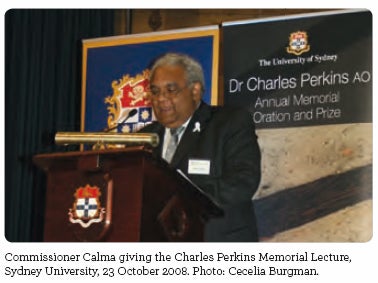
Climate change, water and Indigenous knowledge:
Emerging issues in native title and Indigenous land rights
Climate change presents a unique risk to the livelihoods of Indigenous Australians.
As coastal and island communities confront rising sea levels, and inland areas become hotter and drier, Indigenous peoples are at risk of further economic marginalisation, as well as potential dislocation from, and exploitation of, their traditional lands, waters and natural resources.
It also poses a significant threat to the physical health of Indigenous communities and the maintenance and sustainability of their traditional life, languages, cultures and knowledge.
The Native Title Report 2008 examines the challenge of climate change for Australia’s Indigenous peoples and the support they require to put in place adaptation and mitigation strategies, as well as new opportunities to participate in emerging carbon markets and to apply traditional knowledge in response to climate change.
The report also looks at how some Indigenous communities are working together, and with government and non-government groups, to contribute to policies that promote effective water management and respect for their unique cultural water rights.
To date, however, Indigenous stakeholders have been generally excluded from the policy development processes on climate change and water resources. This omission needs to be rectified because:
- a human-rights approach requires Indigenous peoples to be actively engaged in all levels of management and decision-making that affects their livelihoods and communities.
- engaging and supporting Indigenous peoples is essential to ensure the effectiveness of adaptation and mitigation strategies for both Indigenous communities and the broader Australian community.
- reducing greenhouse gases and carbon abatement will rely heavily on Indigenous lands and waters. This requires obtaining the free, prior and informed consent of Indigenous peoples.
- Indigenous traditional knowledge, land management and conservation practices will be crucial to responding to climate change, maintaining biological diversity and preserving important ecosystems.
The report also considers the lack of protection for Indigenous traditional knowledge under current intellectual property laws, such as copyright and patenting.
With growing opportunities to apply Indigenous traditional knowledge in climate change initiatives, it is necessary to establish a robust protection system that provides clear protocols around the use, access and ownership of this knowledge.
Find out more
See the Community Guide on Climate change, water and Indigenous knowledge – including case studies from the Torres Strait Islands and the Murray-Darling Basin. Available online at www.humanrights.gov.au/social_justice/nt_report/ntreport08/ or by phoning 1300 369 711.
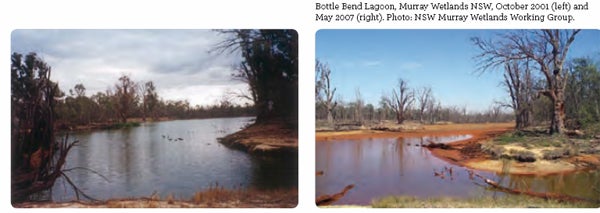
Building a stronger future through education
Debates on the pros and cons of different approaches to the education of Aboriginal and Torres Strait Islander children and youth often concentrate on education services in remote Australia, where Indigenous students make up the majority of the school populations and where the schools are generally not viewed – or often funded – in the same way as ‘mainstream’ schools.
With few exceptions, the discussions focus on whether it is better to educate children in their own communities or to place them in boarding schools where they can receive a ‘mainstream’ education.
The truth is that there are very large gaps in education services for remote Australia and many Aboriginal and Torres Strait Islander students in these regions receive a part-time education in sub-standard school facilities – if they receive a service at all. As a result, their English literacy and numeracy skills are often well below other Australian students.
It is not possible, practical or desirable to move all remote students to urban centres – quality education must move to them.
The Report highlights the fact that no accurate information exists to assess whether remote Indigenous students have reasonable access to pre-school, primary and secondary school services in their region.
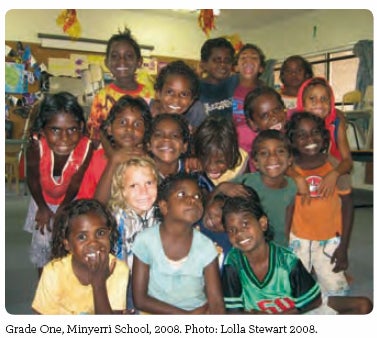
It is time to assess the availability of education services in remote Australia and to ensure that quality education is available when the population warrants them. The report outlines a number of specific measures to begin this process.
A key first step is to build strong partnerships between Indigenous stakeholders, school service providers and government representatives in remote regions so that decisions can be made at the local level.
In addition, it is important that remote teachers and leaders are properly supported and resourced and that innovative solutions are developed to provide early childhood education services, an essential building block in child development, in those communities where it is needed.
There are many shining examples of good practice in remote education and the report includes a number of case studies which show that remarkable things are already happening. What is needed is to create an education system that can support and sustain more of these promising initiatives.
Education is the right of all Australian children and, in a country as wealthy as ours, remote Indigenous students should receive no less.
Tom Calma
Beyond the Apology – Indigenous healing
We now need to move beyond the Apology to achieve healing for Indigenous peoples.
So many individuals have been touched by trauma in some way, through forcible removal from their families as children and through family violence, suicide, substance abuse, incarceration or sexual abuse. This trauma can often be passed onto the next generation in destructive cycles of violence, abuse and despair.
There is an urgent need for healing services to address the psychological and spiritual wounds experienced by Indigenous peoples.
Healing is not a new idea. Previous Social Justice Reports have drawn attention to many good examples of community programs addressing Indigenous family violence, child protection and women leaving prison.

This year’s report includes more promising healing initiatives, including cultural camps for at-risk young people, cultural healing groups for young men, community capacity building, and training programs in healing.
Although desperately needed, these healing services are often ad hoc and poorly funded. What is required is consistent, long term support for the Stolen Generations, their families and communities.
This is why the Commissioner has called for the establishment of an independent, Indigenous-controlled National Indigenous Healing Body that would be responsible for developing and implementing a national Indigenous healing framework.
However, it is important to take time to get the foundations right. Experience shows that genuine, sensitive and constructive community engagement will ultimately lead to better policy and more positive outcomes for individuals and communities.

A national approach to Indigenous healing
The National Indigenous Healing Body should:
- be based on the principles of self-determination, respect for human rights, reconciliation, and adopt a community development approach that is grounded in Indigenous culture and identity
- have adequate resourcing for long-term, community-generated and culturally appropriate Indigenous healing services and programs, commensurate with need
- have a broad range of possible roles and functions, including research, public education, capacity building, training, accreditation, policy review, public reporting and monitoring and evaluation
- engage with state and territory governments to develop a nationally consistent approach in the provision of financial redress (compensation) for the Stolen Generations
- conduct educational activities about Indigenous healing for Indigenous communities, service providers and relevant government departments.
A new approach to native title
The National Apology to the Stolen Generations in February 2008 recognised the devastating impact that the forcible removal of Indigenous children has had on so many individuals, families and communities.
These policies also contributed to the dispossession and removal of Indigenous peoples from their traditional lands, disrupting their connection to country and culture. It is a cruel twist that the more an Indigenous community has been hurt by the policies of forcible removal, the less likely it is they will be able to have their native title recognised.
Shortly after the National Apology the federal Attorney-General, recognising the major flaws in the existing system, announced he wanted to change the adversarial nature of the native title system. The government’s main focus will be to alter the attitude of parties involved in native title negotiations.
There is certainly benefit in this approach. However, if the government hopes to achieve its goal of seeing ‘more, and better, outcomes delivered through native title processes’, then it must also make legislative and policy changes to the underlying system.

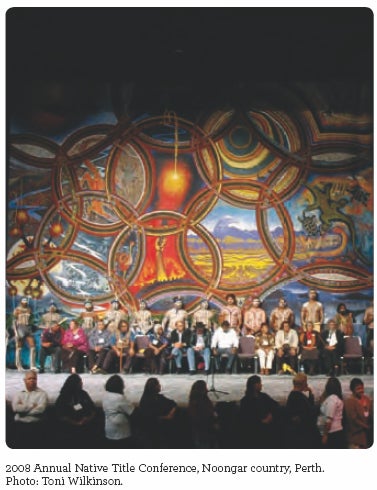
Before the courts
Between 1 July 2007 and 30 June 2008 the Federal Court made 10 native title determinations – all of which found that native title exists over some or all of the determination area. Of these, one determination was litigated and nine were consent determinations.
The Native Title Report 2008 discusses the Blue Mud Bay, Noongar, Rubibi and Griffiths cases, which highlight particular human rights issues for Aboriginal and Torres Strait Islander peoples, including:
- the compulsory acquisition of lands where no other interests in the land exist
- the extinguishment of native title rights and interests
- the legitimacy of elements of traditional law and custom
- the ever-present issues of connection and continuity.
My primary concern is that ‘attitudes’ are discretionary and dependent on the elected government of each jurisdiction. It does not create certainty, predictability or equity in native title outcomes across Australia.
If a government changes, there is no guarantee that the ‘flexible’ approach will be maintained. That’s why improvements to the native title system need to be enshrined in legislation to ensure that the rights of Indigenous peoples are fully protected and not swept aside when it’s convenient.
Some of the areas where change is needed include:
- amending the Native Title Act to provide a presumption of continuity by Indigenous claimants and to address the Federal Court’s current inability to consider the reasons for interruption in continuity
- providing appropriate funding and support for Native Title Representative Bodies, Native Title Service Providers and Prescribed Bodies Corporate
- preparing a clear and comprehensive guide to the native title registration test, and
- pursuing consistent legislative protection of the rights of Indigenous peoples to give consent and permission for access to or use of their lands and waters.
Assessing the 2007 changes
Last year’s Native Title Report raised a number of concerns about changes to the native title system which were enacted in 2007 by the previous Australian Government.
These amendments included giving stronger powers to the National Native Title Tribunal, as well as changes to the native title registration test, the respondent funding scheme and the way in which Native Title Representative Bodies and Prescribed Bodies Corporate function.
The feedback received from a number of stakeholders this year is two-fold. First, they told me that the changes have not made a notable impact so far. And secondly, they expressed a concern that the changes do not go far enough to protect the rights of Indigenous peoples.
If the Native Title Act is going to have the outcomes envisaged in its preamble, the new Australian Government must take active steps to improve the whole system. Tinkering at the edges won’t deliver the changes that are urgently needed.
Honeyed words, empty of any practical consequences, reflect neither the language, the purpose nor the spirit of the National Apology,
Justice Kirby, Northern Territory v Arnhem Land Aboriginal Trust
A notable policy change, announced in July 2008 by the Attorney-General, is that the Commonwealth will now recognise that non-exclusive native title rights can exist in all of Australia’s territorial waters, up to 12 nautical miles from the shoreline. This means the Australian Government’s approach is now consistent with that of the states and it is likely to assist negotiations in a number of claims.
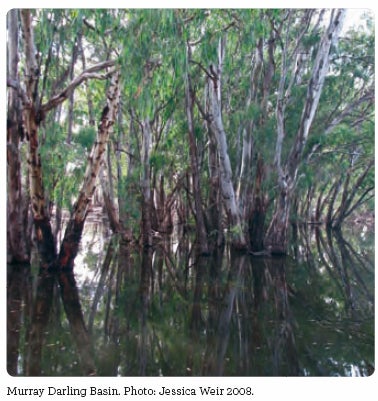
Close the Gap on Indigenous health inequality
In March 2008 the Australian Government and the Opposition signed an historic, bipartisan Statement of Intent committed to close the gap on Indigenous health inequality and life expectancy by 2030 and to provide the necessary primary health care and health infrastructure to meet that goal by 2018.
The Statement was also signed by representatives of Indigenous and non-Indigenous health peak bodies, along with the Aboriginal and Torres Strait Islander Social Justice Commissioner.
Other major outcomes from the ‘Close the Gap’ Campaign include:
- the development of National Indigenous Health Equality Targets, which set out integrated targets and benchmarks in key planning and service delivery areas, including Indigenous participation, health status, primary health care, infrastructure and social and cultural determinants;
- the establishment by the Australian Government of a National Indigenous Health Equality Council, to provide advice to the Australian Government on the achievement of Indigenous health equality.
The Council of Australian Governments has also committed $1.6 billion toward achieving Indigenous health equality, in addition to substantial billion dollar commitments to improve Indigenous housing in remote areas.
The next step is to develop a comprehensive, long-term and properly-resourced national plan of action to achieve Indigenous health equality – and to do it in genuine partnership with Indigenous peoples.
To find out more about the ‘Close the Gap’ Campaign – and to read the Statement of Intent and the National Indigenous Health Equality Targets – visit www.humanrights.gov.au/social_justice/health/.
Our challenge for the future is to embrace a new partnership between Indigenous and non-Indigenous Australians. The core of this partnership for the future is closing the gap between Indigenous and non-Indigenous Australians on life expectancy, educational achievement and employment opportunities.
Prime Minister Kevin Rudd

More on Social Justice and Native Title
The Social Justice Report 2008 is available at www.humanrights.gov.au/social_justice/sj_report/sjreport08/
The Native Title Report 2008 is available at www.humanrights.gov.au/social_justice/nt_report/ntreport08/
For hard back and CD-Rom copies of the Social Justice and Native Title Reports and this Community Guide Call 1300 369 711 or order online at: www.humanrights.gov.au/about/publications/
Evaluation & Surveys
Online surveys
Please send other comments or feedback to: socialjustice@humanrights.gov.au
Dealing with discrimination
The Australian Human Rights Commission is an independent organisation that investigates and resolves complaints about discrimination, harassment and bullying on the basis of race, sex, disability, age, religion, sexual preference, criminal record, trade union activity and other grounds.
For free advice on discrimination and your rights, or to make a complaint, call the Complaints Information Line on 02 9284 9888, 1300 656 419 (local call) or 1800 620 241 (TTY).
Information about making or responding to a complaint is available at www.humanrights.gov.au. You can also email us at complaintsinfo@humanrights.gov.au.
For more information about the Australian Human Rights Commission, please visit www.humanrights.gov.au; or write to:
Social Justice Unit
Australian Human Rights Commission
GPO Box 5218
Sydney NSW 2001

